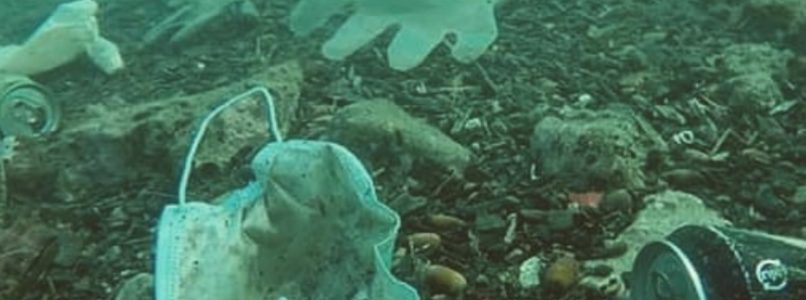Divers from the French Opération Mer Propre association warned that the pandemic could trigger an increase in pollution. that's how
If the water situation in the oceans is already very critical, the coronavirus pandemic is likely to worsen it further. According to WWF data, 4.8 to 12.7 million tons of plastic waste end up in the sea every year: at least 86 million tons of plastic have already ended up in marine waters, of which a large part has been deposited on seabed. Only in the Mediterranean 570 thousand tons of plastic are poured annually, a quantity that the WWF has defined equal to a discharge into the sea of 33800 plastic bottles every minute.
But the divers of the French Opération Mer Propre (a non-profit association that regularly takes care of the collection of waste along the French Riviera) have sounded the alarm: after finding disposable masks that float like jellyfish and latex gloves impregnated with water scattered on the seabed, they warned that the pandemic could trigger an increase in pollution, adding more waste to the plastic which already threatens marine life. Joffrey Peltier, who is part of the organization, explained that among these "solid wastes" there are dozens of gloves, masks and vials of hand sanitizer, which add up to disposable plastic cups and aluminum cans. The situation could escalate "if nothing is done," as Peltier said.
More masks than jellyfish
«We will soon run the risk of having more masks than jellyfish in the Mediterranean, "added Laurent Lombard, another member of the association, posting a video on social media of a dive showing masks, woven with algae and disposable gloves, in the sea near Antibes. "When there is a strong storm, all the masks and gloves abandoned on the sidewalks or in the sewers will end up at sea."
The group hopes that these images will cause people to choose reusable masks and to prefer more frequent hand washes than latex gloves. "With all the alternatives there are, plastic is not the solution to protect us from Covid-19," said Peltier. "This is our message."
Every mask takes about 450 years to decomposeAs politician Éric Pauget wrote in a letter to Emmanuel Macron last month: it is an "ecological time bomb" with "lasting environmental consequences for our planet".


